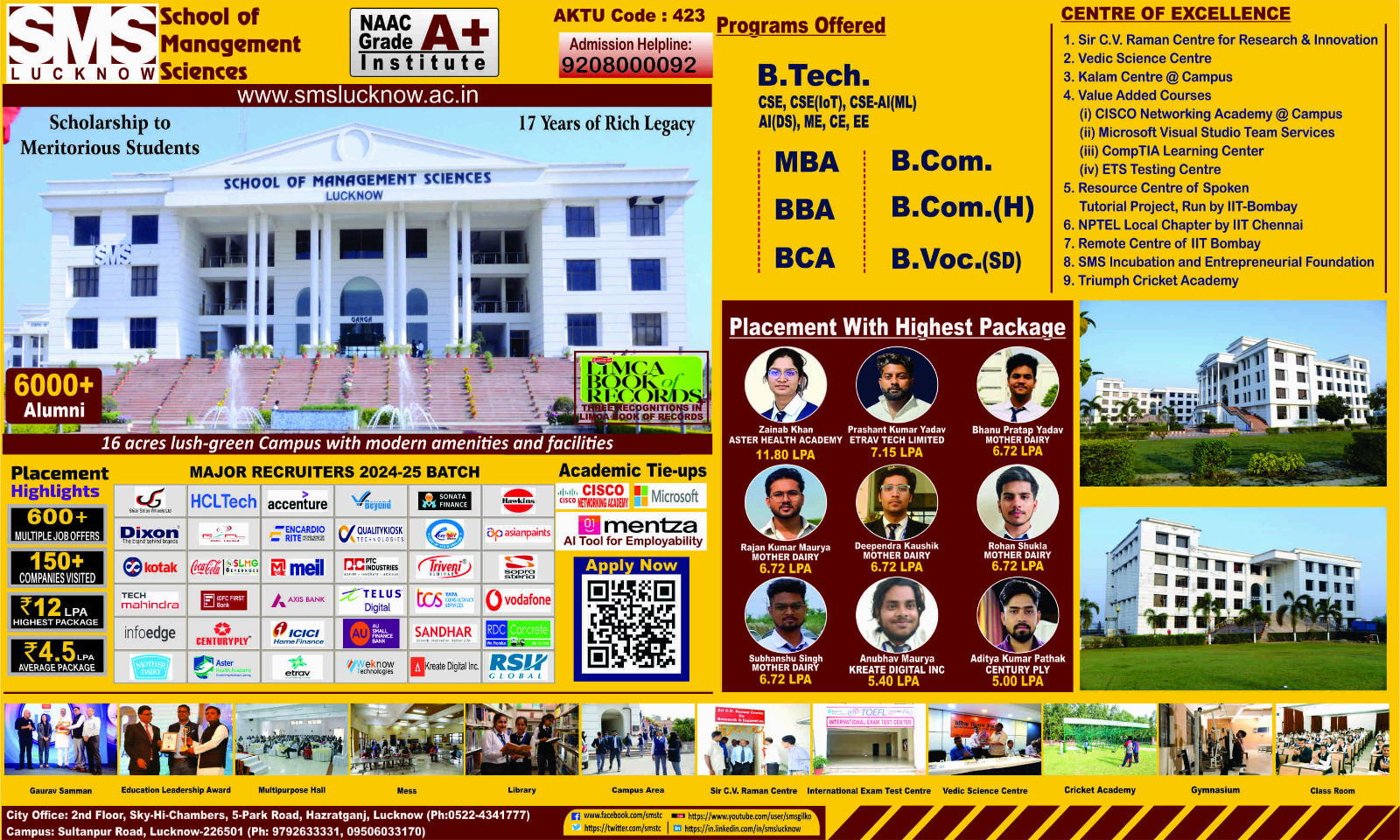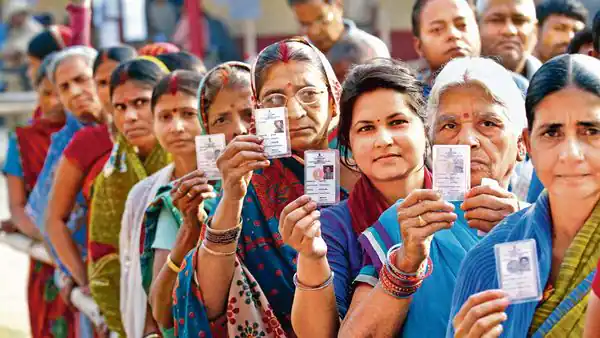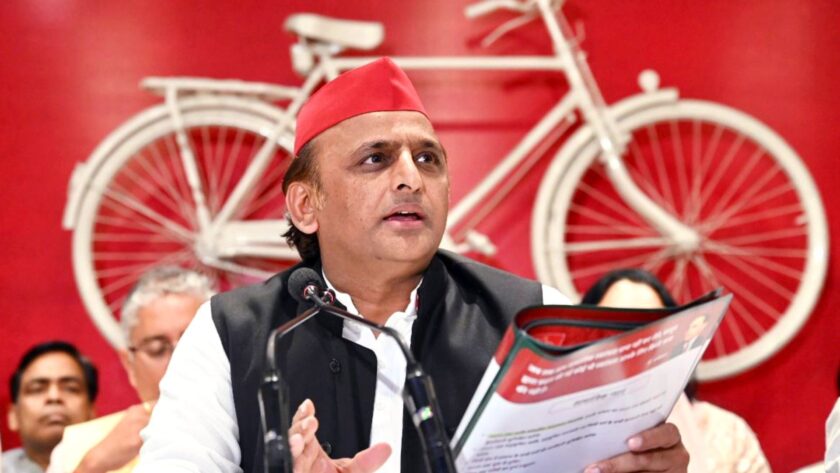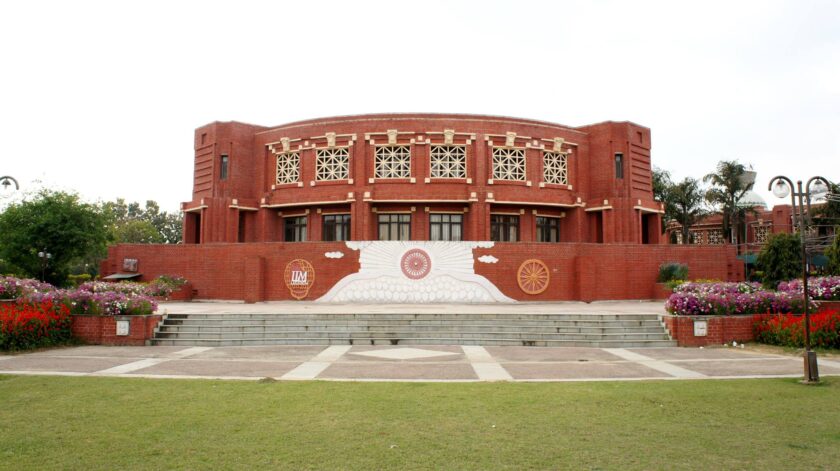Lucknow: Amidst shrill rhetoric, India’s election summer seems to be facing a piquant situation. As India’s 2024 poll battle witnesses an overall decline of 7.3% in voting as compared with 2019 in the Hindi heartland, eight constituencies recorded 66.47% votes in 2019, and in 2024 the polling percentage thus far has been 60.18%.
Expert opinion highlights that while Modi enjoys considerable popularity in public opinion polls, there is no big pro-incumbency mood outside the core base – the so-called “wave election”. The proportion of respondents in the Lokniti pre-poll surveys who said that the government should get another chance was lower than the PM’s popularity rating and the NDA’s projected vote share.
Historically, the western part of Uttar Pradesh has seen high voter turnout. However the 2019 elections were marked by the emotional impact of the Balakot strike, which boosted national spirit and voter engagement. This time around, the election campaign lacks such emotive issues.
Experts attribute the lower turnout to local concerns such as candidate selection, discontent with certain parties, and possibly even the oppressive heat. However the belief is that the public connect with the masses is low. This time the decisions on candidates has been reasonably late. There is also a buzz that there will be an impact on vote percnetage post polls in Ayodhya, Lucknow, Barabanki and Gorakhpur. Few experts also aver that the Oppositin Unity and inactive status could be a factor in the vote pattern difference.
Dissatisfaction among Kshatriya voters seemed to be a major factor. Sone communities experienced a vertical division, leading to fragmentation in villages. There has been a definite impact of candidate selection on voter mobilization.
With mercury soaring past 40 degrees Celsius, the Election Commission faces the challenge of motivating voters to achieve higher turnout goals.
There was more voting in the third phase this time than in the second phase. In the second phase, 54.85 percent votes were cast on eight seats of UP. However, in the third phase, voting was less as compared to 2019. Last time there was 60.52 percent voting. This time the highest 62.81 percent votes were cast in Sambhal seat while the lowest 53.99 percent votes were cast in Agra reserved seat.
The issue of electricity, roads and drainage problems kept resonating on the day of voting. Angered by the problems not being resolved, the villagers boycotted the voting. People have been upset with frequent power cuts. Farmers’ crops drying up. They have complained many times but no one is ready to listen.
The third phase of elections in Uttar Pradesh witnessed a turnout of 57.34% across 10 constituencies, marking a decrease of 3.92% compared to the 2019 elections. Historically, lower voter participation has often signaled challenges for the ruling party. However, analysts present a nuanced perspective on this trend.
In 2009, the voter turnout stood at 49.09%, with BJP clinching only two seats, Aonla and Agra. SP won three seats, BSP two, Congress one, RLD one, and an independent candidate emerged victorious in one seat.
The tide turned drastically in 2014 with the advent of the Modi wave, witnessing an 11.76% surge in voter turnout to 60.85%. BJP won seven out of the ten seats, capitalizing on the increased participation. Similarly, in 2019, despite a marginal uptick of 0.41% in voter turnout, BJP managed to secure an additional seat compared to 2014, capturing eight seats.
Commenting on the recent figures, experts attribute the decline to various factors, including scorching temperatures and decreased mobilization efforts. They suggest that BJP faces stiff competition from the Indi alliance.
Shifting voter dynamics set the stage for a closely watched battle in Uttar Pradesh, where every percentage point could sway the final outcome believe experts. In the national perspective – final data of voter turnout made public by the Election Commission showed that Hindi-speaking states – Uttar Pradesh, Bihar, Madhya Pradesh and Rajasthan to a lesser extent – have seen a similar decline compared to the 2019 general elections.

Interestingly pattern of declining voter turnout was evident in constituencies with a high number of Muslims, whom the BJP does not count among its voters. In Kairana, the voting percentage decreased from 67.45 percent in 2019 to 62.46 percent in 2024, in Muzaffarnagar it decreased from 68.42 percent in 2019 to 59.13 percent in 2024, in Moradabad it decreased from 65.46 percent in 2019 to 62.18 percent. percent in 2024 and in Rampur increased from 63.19 percent in 2019 to 55.85 percent in 2024.
Youth Disengagement: There’s an increasing trend of political disengagement among the youth in Uttar Pradesh. This demographic is more transient due to educational and employment opportunities outside the state.
Urbanization: As more people move to urban areas, issues such as voter registration in new locales or the logistical challenges of returning to rural hometowns to vote can decrease turnout.
Disillusionment with Political Parties: Many voters express a growing disillusionment with traditional political parties and their leaders.
Lack of Compelling Choices: The absence of inspiring leadership or innovative political platforms can lead to voter apathy. 3.
Polling Station Accessibility: In some rural or newly urbanized areas, the accessibility of polling stations is still a significant challenge. Long distances and inconvenient locations can deter voters.
Women’s Voter Turnout: While women’s participation in UP elections has been increasing, cultural norms and safety concerns still prevent some women from voting.
Reduced Legitimacy: Lower participation rates might question the legitimacy of the elected government, particularly if the turnout drops significantly.
Shift in Policy Focus: Politicians may cater more to the needs of consistent voters, which could skew policy priorities away from the needs of the broader population.
Increased Polarization: With fewer moderates voting, there could be an intensification of political polarization, leading to more extreme political positions.





